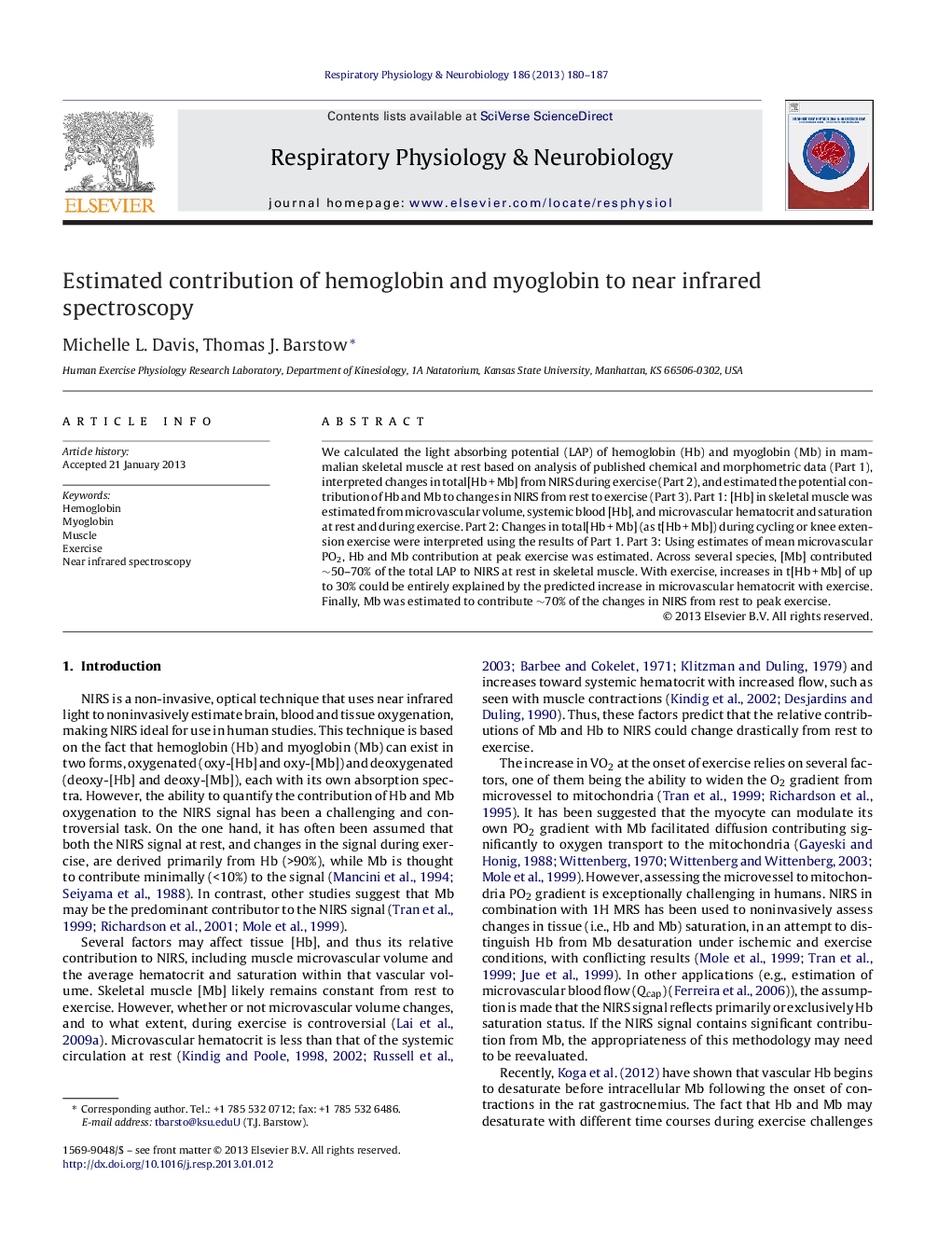| Article ID | Journal | Published Year | Pages | File Type |
|---|---|---|---|---|
| 2847211 | Respiratory Physiology & Neurobiology | 2013 | 8 Pages |
We calculated the light absorbing potential (LAP) of hemoglobin (Hb) and myoglobin (Mb) in mammalian skeletal muscle at rest based on analysis of published chemical and morphometric data (Part 1), interpreted changes in total[Hb + Mb] from NIRS during exercise (Part 2), and estimated the potential contribution of Hb and Mb to changes in NIRS from rest to exercise (Part 3). Part 1: [Hb] in skeletal muscle was estimated from microvascular volume, systemic blood [Hb], and microvascular hematocrit and saturation at rest and during exercise. Part 2: Changes in total[Hb + Mb] (as t[Hb + Mb]) during cycling or knee extension exercise were interpreted using the results of Part 1. Part 3: Using estimates of mean microvascular PO2, Hb and Mb contribution at peak exercise was estimated. Across several species, [Mb] contributed ∼50–70% of the total LAP to NIRS at rest in skeletal muscle. With exercise, increases in t[Hb + Mb] of up to 30% could be entirely explained by the predicted increase in microvascular hematocrit with exercise. Finally, Mb was estimated to contribute ∼70% of the changes in NIRS from rest to peak exercise.
► Skeletal muscle hemoglobin and myoglobin contributions to near infrared spectroscopy at rest were estimated from values in the literature. ► Contrary to popular opinion, myoglobin was estimated to contribute up to 40–70% of the NIRS signals. ► Changes in total (hemoglobin + myoglobin) in humans during exercise (assumed to reflect changes in hemoglobin) can be explained by our modeling and suggest that myoglobin contributes significantly to the NIRS signals.
